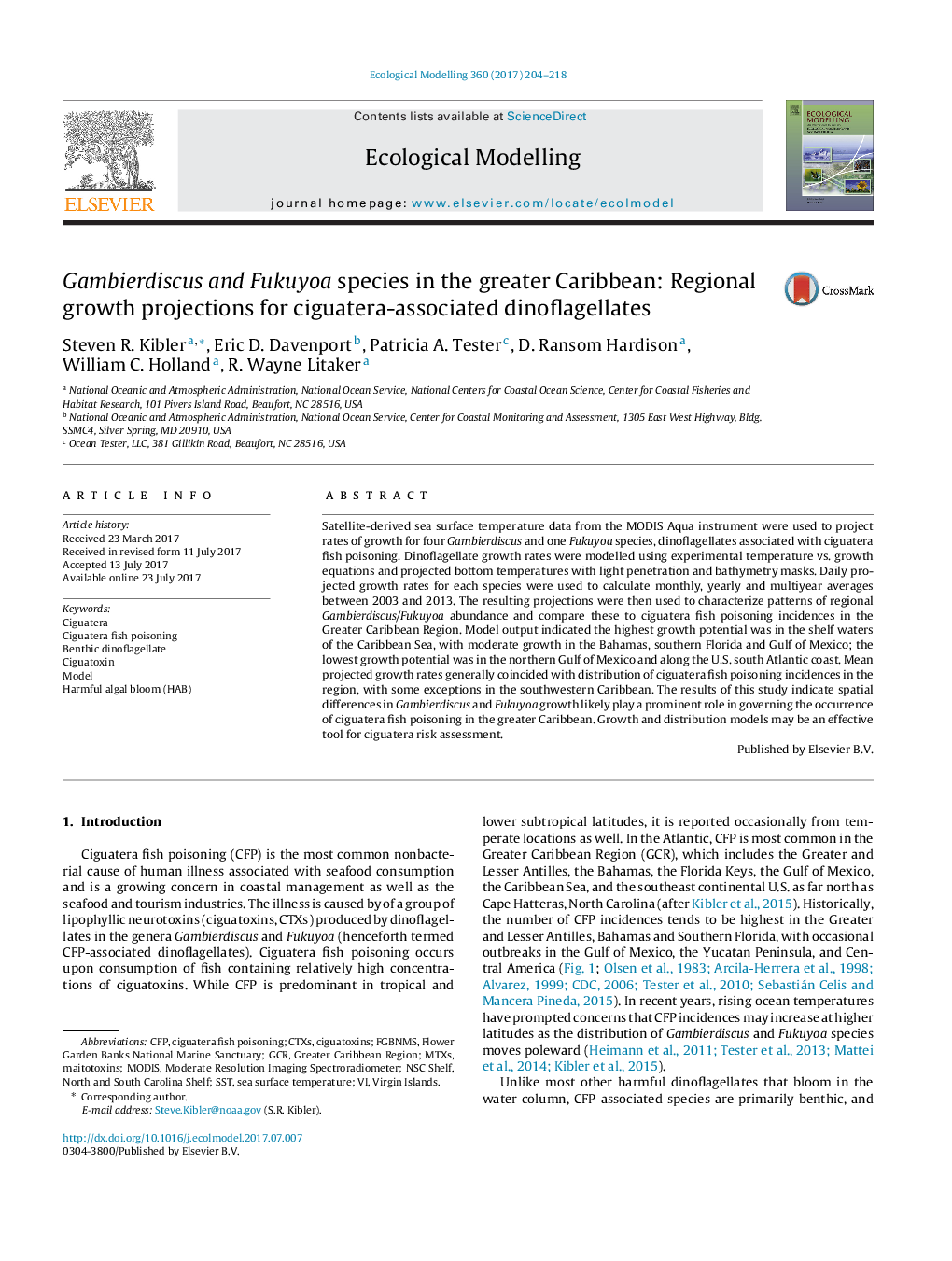| Article ID | Journal | Published Year | Pages | File Type |
|---|---|---|---|---|
| 5742060 | Ecological Modelling | 2017 | 15 Pages |
â¢Model used to projected growth of Ciguatera-associated dinoflagellates in Caribbean.â¢Gambierdiscus growth projected from SST, bottom temperature, experimental growth data.â¢Growth projections account for Ciguatera incidence in greater Caribbean.â¢Model is first step in development of forecast tool for Ciguatera risk assessment.
Satellite-derived sea surface temperature data from the MODIS Aqua instrument were used to project rates of growth for four Gambierdiscus and one Fukuyoa species, dinoflagellates associated with ciguatera fish poisoning. Dinoflagellate growth rates were modelled using experimental temperature vs. growth equations and projected bottom temperatures with light penetration and bathymetry masks. Daily projected growth rates for each species were used to calculate monthly, yearly and multiyear averages between 2003 and 2013. The resulting projections were then used to characterize patterns of regional Gambierdiscus/Fukuyoa abundance and compare these to ciguatera fish poisoning incidences in the Greater Caribbean Region. Model output indicated the highest growth potential was in the shelf waters of the Caribbean Sea, with moderate growth in the Bahamas, southern Florida and Gulf of Mexico; the lowest growth potential was in the northern Gulf of Mexico and along the U.S. south Atlantic coast. Mean projected growth rates generally coincided with distribution of ciguatera fish poisoning incidences in the region, with some exceptions in the southwestern Caribbean. The results of this study indicate spatial differences in Gambierdiscus and Fukuyoa growth likely play a prominent role in governing the occurrence of ciguatera fish poisoning in the greater Caribbean. Growth and distribution models may be an effective tool for ciguatera risk assessment.
